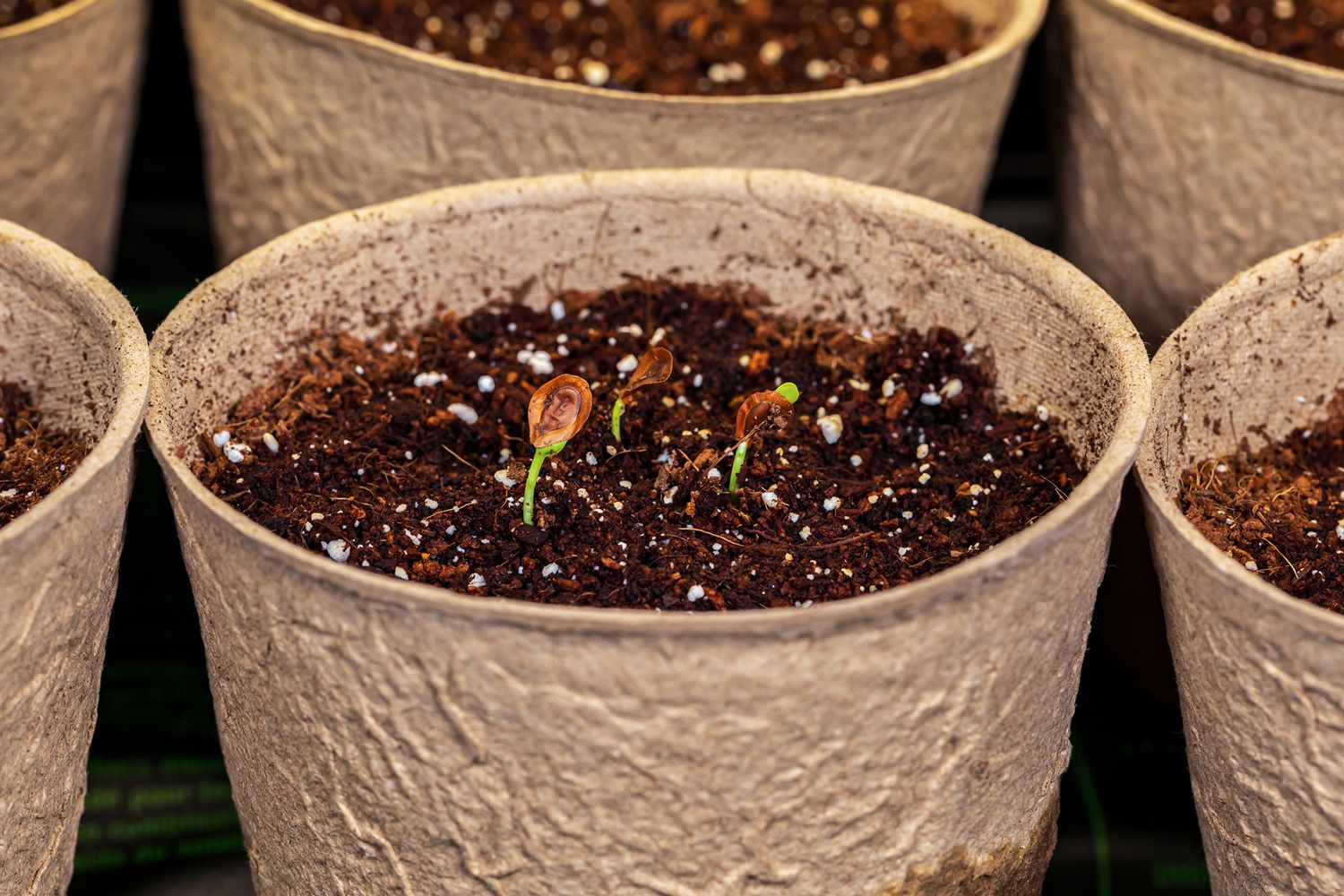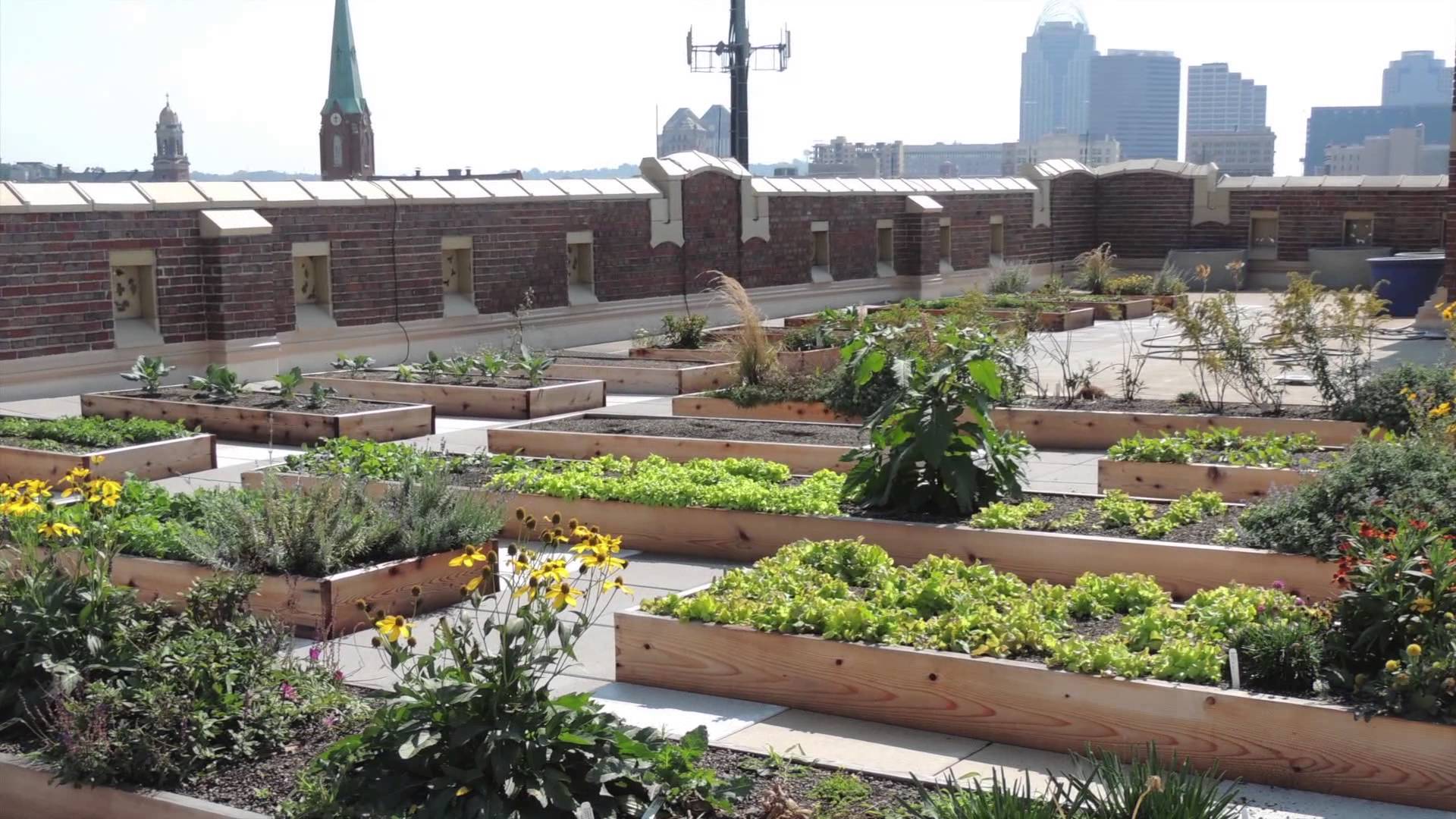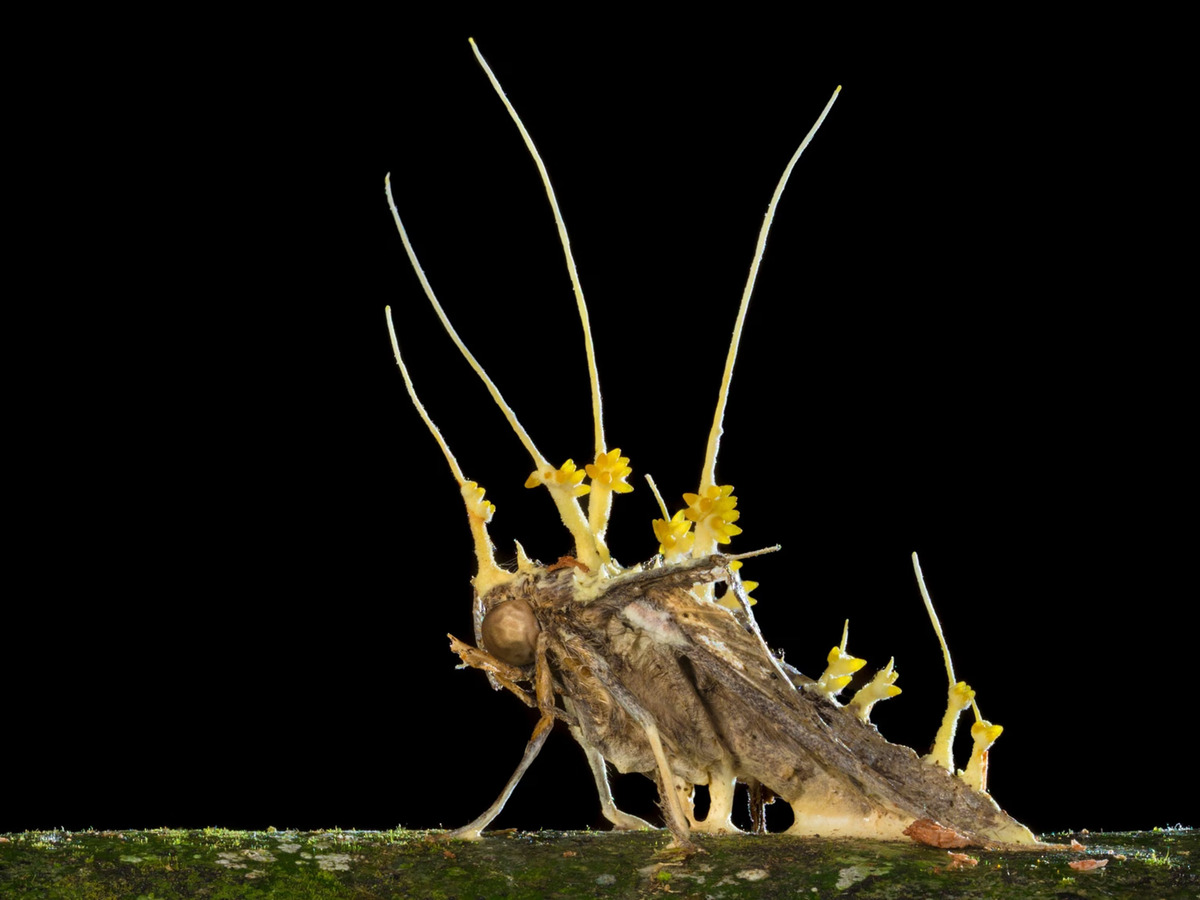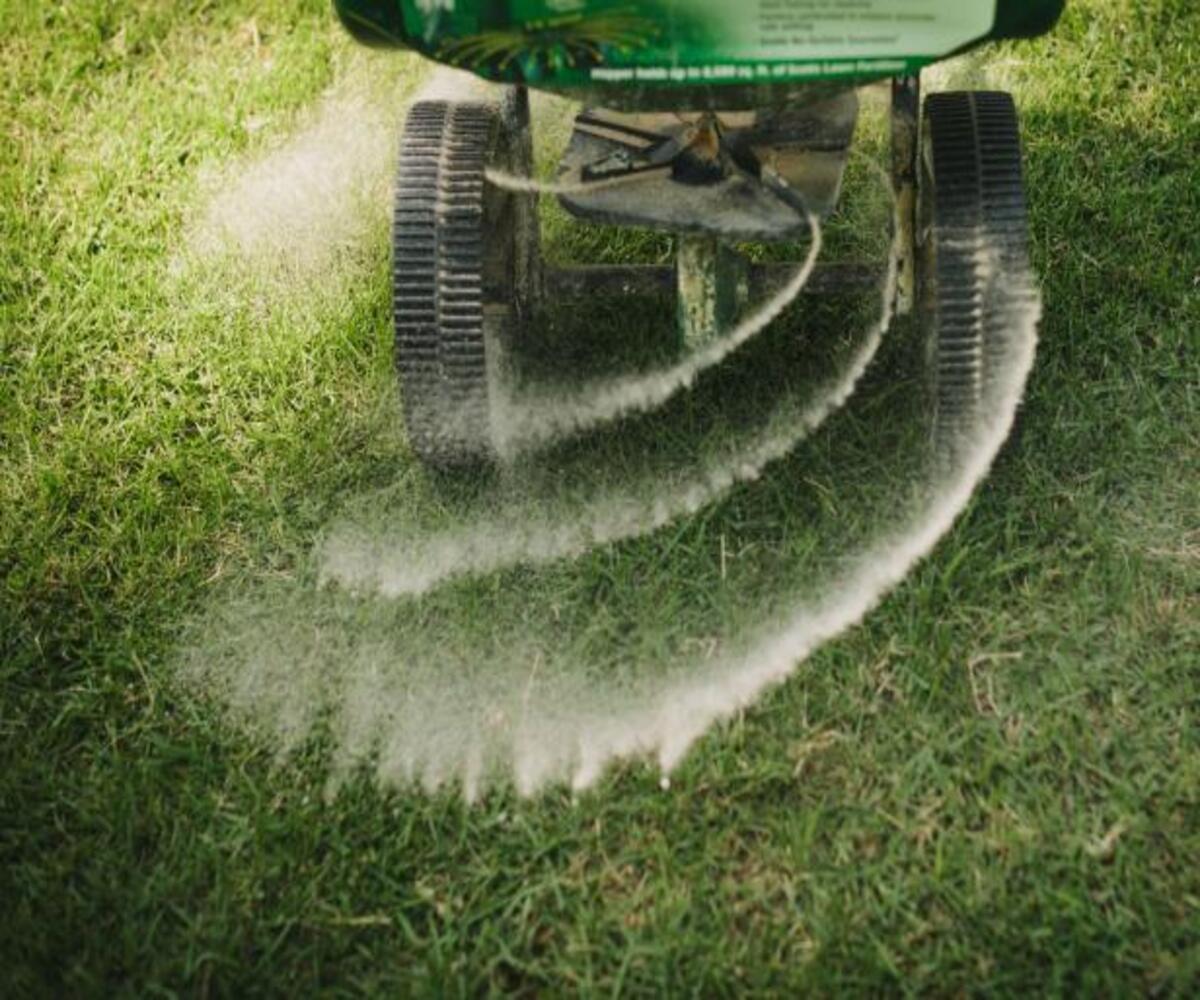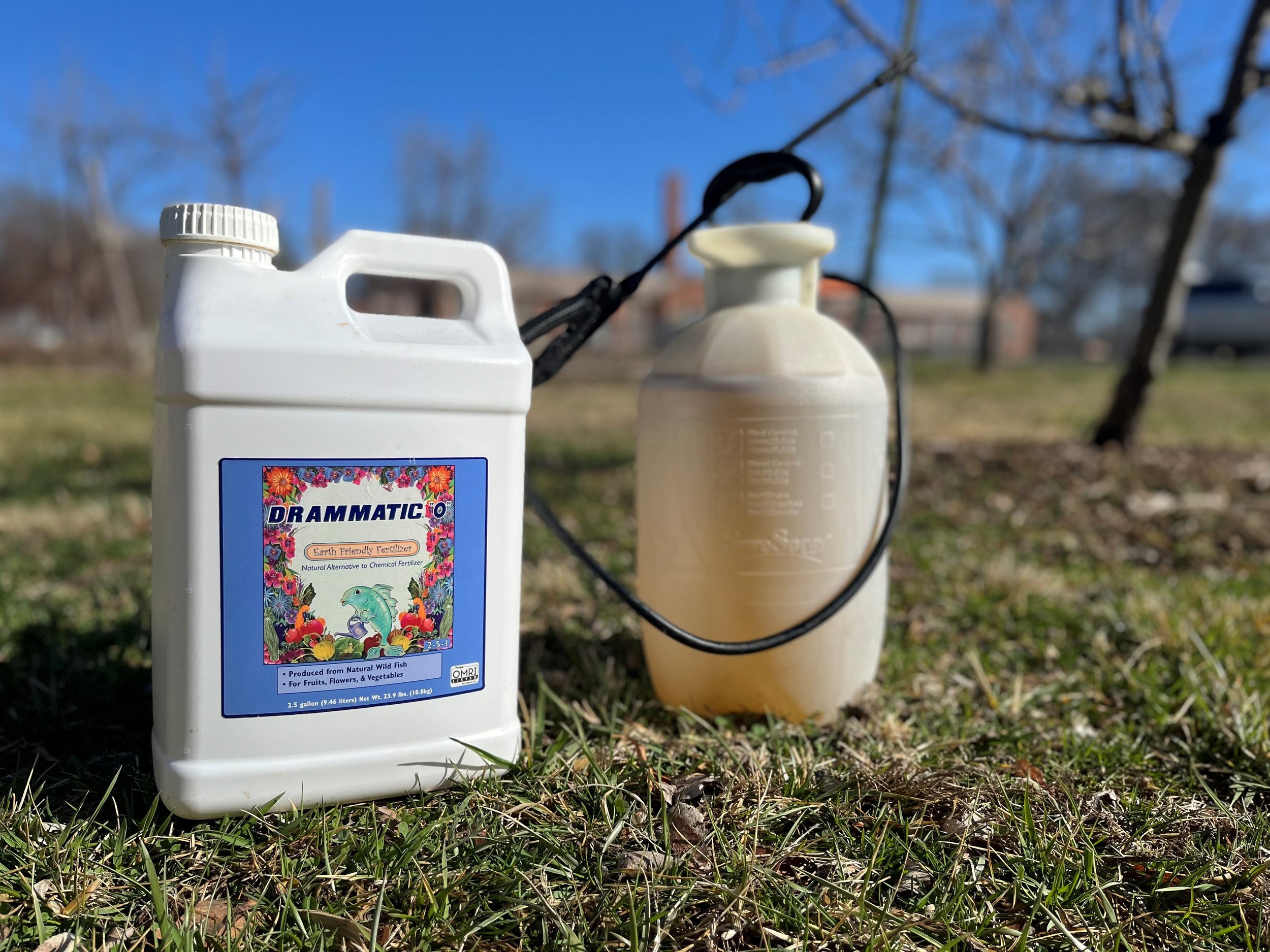Home>Gardening News and Trends>Latest News>What Does A Horticulture Technician Do
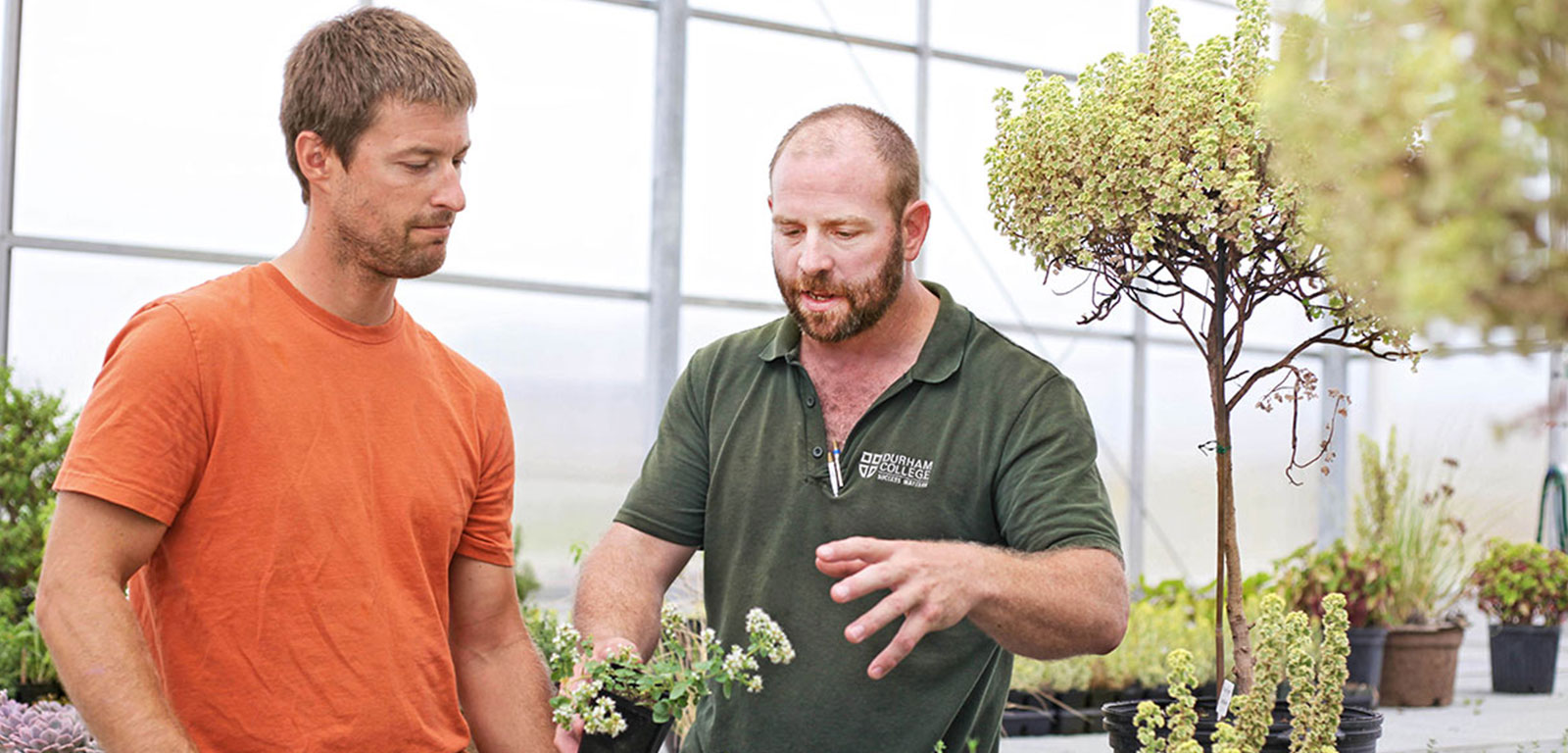

Latest News
What Does A Horticulture Technician Do
Modified: February 3, 2024
Discover the latest news and insights on what a horticulture technician does. Gain valuable knowledge about their role in landscaping, plant care, and garden maintenance.
(Many of the links in this article redirect to a specific reviewed product. Your purchase of these products through affiliate links helps to generate commission for Chicagolandgardening.com, at no extra cost. Learn more)
Table of Contents
Introduction
A horticulture technician plays a vital role in the maintenance and development of landscapes, gardens, and green spaces. With their expertise in plant care and knowledge of horticultural practices, they ensure the health and beauty of plants, flowers, trees, and shrubs. Whether working in botanical gardens, nurseries, parks, or private estates, horticulture technicians are responsible for creating and maintaining natural spaces that delight and inspire.
As a horticulture technician, you’ll have the opportunity to work with a variety of plant species, develop your landscaping skills, and contribute to the overall aesthetic appeal of outdoor areas. From planting and pruning to pest control and soil management, your work will promote the growth and sustainability of plants while creating visually appealing and well-maintained environments.
Not only does the role of a horticulture technician require a deep passion for plants and the outdoors, but it also demands a strong understanding of horticultural techniques and the ability to solve complex problems related to plant health and maintenance. Successful horticulture technicians possess a keen eye for detail, a strong work ethic, and the ability to adapt to different environments and climates.
In this article, we will explore the responsibilities of a horticulture technician, the skills required for the role, and the career prospects in this field. Whether you’re a seasoned horticulture professional seeking further insight or someone considering a career in this field, this article will provide you with a comprehensive overview of what it means to be a horticulture technician.
Job Overview
A horticulture technician is responsible for the care, maintenance, and development of plants and green spaces. They work closely with horticulturists, gardeners, and landscapers to ensure the proper growth and health of plants, as well as the overall aesthetic appeal of outdoor areas. Horticulture technicians can be found working in various settings, including botanical gardens, parks, nurseries, urban landscapes, and private estates.
One of the main responsibilities of a horticulture technician is plant care and maintenance. This involves tasks such as planting, watering, fertilizing, pruning, and harvesting. They are skilled in identifying different plant species and understanding their specific needs in terms of sunlight, water, and nutrients. By closely monitoring plant health and addressing any issues promptly, they help ensure the long-term survival and vitality of the plants under their care.
In addition to plant care, horticulture technicians are also involved in pest and disease control. They are knowledgeable about common pests and diseases that can affect plants and have the skills to identify and address these issues. This may involve using organic or chemical-based treatments, implementing integrated pest management strategies, and practicing preventative measures to minimize potential damage.
Soil management is another important aspect of the job. A horticulture technician understands the importance of maintaining healthy soil for optimal plant growth. They evaluate soil composition, pH levels, and nutrient content, and make recommendations for soil amendments and fertilizers to improve soil quality. They may also be responsible for soil testing, composting, and erosion control to ensure the sustainability of the landscape.
Furthermore, horticulture technicians may be involved in landscape design and installation. They collaborate with landscape architects and designers to bring their vision to life. This could include selecting appropriate plants for specific spaces, determining plant placement, and creating visually appealing arrangements. They may also assist in the installation of hardscapes, such as pathways, retaining walls, and water features, to enhance the overall design of the outdoor area.
Greenhouse operations are another area of expertise for horticulture technicians. They work in controlled environments, overseeing the cultivation and propagation of plants. This may involve sowing seeds, transplanting seedlings, monitoring temperature and humidity levels, and implementing greenhouse management practices to ensure optimum plant growth. They also play a role in maintaining the greenhouse infrastructure and equipment.
Equipment and tool maintenance is an important part of the job. Horticulture technicians are responsible for the safe operation and upkeep of various tools and machinery used in their work. This includes tools for pruning, irrigation systems, mowers, and tractors. Regular maintenance and repair tasks are essential to ensure their proper functioning and longevity.
Finally, horticulture technicians may be involved in plant propagation. This can include techniques such as grafting, cloning, and seed propagation to create new plants. They carefully follow propagation protocols and maintain records to track the success and growth of propagated plants.
Overall, a horticulture technician’s role is varied and involves a combination of practical skills, plant knowledge, and creative flair. Their work enhances the beauty and functionality of outdoor spaces, contributing to the well-being of individuals and the environment.
Responsibilities
As a horticulture technician, you will have a wide range of responsibilities related to the care and maintenance of plants and green spaces. These responsibilities may vary depending on the specific role and work environment, but here are some common tasks you can expect to undertake:
- Plant care and maintenance: This includes tasks such as planting, watering, fertilizing, pruning, and mulching. You will be responsible for ensuring the proper growth and health of plants by providing them with the necessary nutrients, water, and care.
- Pest and disease control: Identifying and addressing common pests and diseases that can affect plants is another crucial responsibility. You will need to have a good understanding of pest and disease management techniques and be able to implement effective control measures.
- Soil management: Ensuring the soil is healthy and suitable for plant growth is essential. You may be responsible for testing soil pH and nutrient levels, applying fertilizers and amendments, and implementing erosion control measures to maintain soil quality.
- Landscape design and installation: Collaborating with landscape architects and designers, you may assist in selecting appropriate plants, determining their placement, and creating visually appealing landscape arrangements. This may involve installing hardscapes, such as pathways and retaining walls, to enhance the overall design.
- Greenhouse operations: Working in controlled environments, you may be involved in greenhouse operations, including sowing seeds, transplanting seedlings, and maintaining optimum temperature and humidity levels. You may also be responsible for greenhouse infrastructure maintenance.
- Equipment and tool maintenance: Regular maintenance and upkeep of tools and machinery used in horticultural work are essential. This includes cleaning, sharpening, and repairing equipment to ensure proper functionality and safety.
- Plant propagation: Propagating plants through various methods, such as grafting, cloning, or seed propagation, may be part of your responsibilities. You will need to follow propagation protocols and maintain accurate records to track the success and growth of propagated plants.
- Customer service: Providing assistance and answering questions from customers or visitors to the site is crucial. This may involve offering advice on plant selection and care, addressing concerns, and ensuring a positive customer experience.
These responsibilities require a combination of technical skills, plant knowledge, and attention to detail. As a horticulture technician, you play a critical role in maintaining and enhancing the beauty and health of plants and outdoor spaces.
Plant Care and Maintenance
Plant care and maintenance are among the primary responsibilities of a horticulture technician. Ensuring the proper care of plants is crucial for their health, growth, and overall aesthetic appeal. Here are some key aspects of plant care and maintenance that a horticulture technician focuses on:
Planting: Horticulture technicians have the knowledge and expertise to properly plant a variety of plant species. They consider factors such as soil conditions, sunlight requirements, and spacing to determine the best planting techniques. They ensure that plants are properly positioned in the ground or in containers, allowing for optimal root development and growth.
Watering: Providing appropriate water to plants is essential for their survival and health. Horticulture technicians understand the water needs of different plant species and adjust watering schedules accordingly. They take into account factors such as soil moisture levels, weather conditions, and plant age to ensure proper hydration.
Fertilizing: Plants require essential nutrients to thrive. Horticulture technicians are knowledgeable about different types of fertilizers and their specific applications. They analyze soil composition and plant nutrient requirements to determine the appropriate fertilizer and apply it at the right time and in the correct amounts.
Pruning: Pruning is necessary to maintain plant shape, promote healthy growth, and remove dead or damaged branches. Horticulture technicians have expertise in pruning techniques and ensure that plants are pruned at the right time and in the proper manner to prevent excessive stress or damage.
Mulching: Applying mulch around plants offers numerous benefits. It helps conserve soil moisture, suppresses weed growth, and moderates soil temperature. Horticulture technicians know how to apply mulch correctly to provide these advantages while avoiding excessive mulch depth around plant stems.
Monitoring and Disease Control: Horticulture technicians regularly inspect plants for signs of pests, diseases, and other abnormalities. They are trained to identify different pests and diseases and take appropriate actions to control their spread. This can involve applying organic or chemical-based treatments, implementing integrated pest management strategies, or recommending measures to prevent future infestations.
Seasonal Care: Plants have different care needs throughout the year. Horticulture technicians understand the seasonal requirements of various plant species and adjust their care practices accordingly. They may provide winter protection, such as wrapping or covering plants, or implement measures to mitigate heat stress during hot summer months.
By diligently performing these plant care and maintenance tasks, horticulture technicians play a crucial role in ensuring the health, beauty, and longevity of plants. Their expertise helps create vibrant and thriving green spaces that are appreciated by all who encounter them.
Pest and Disease Control
Pest and disease control is a critical aspect of a horticulture technician’s responsibilities. Plants are vulnerable to a wide range of pests, diseases, and other factors that can negatively impact their health and growth. Effective pest and disease control measures are essential to maintain the overall well-being of plants. Here are some key points related to pest and disease control that horticulture technicians focus on:
Identification: One of the first steps in pest and disease control is accurately identifying the problem. Horticulture technicians are trained to recognize common pests, such as aphids, mealybugs, mites, and scale, as well as various plant diseases, including fungal infections, bacterial infections, and viral diseases. By identifying the specific pest or disease affecting the plants, appropriate control measures can be implemented.
Integrated Pest Management (IPM): Horticulture technicians follow integrated pest management principles to control pests effectively and minimize the use of chemicals. IPM involves a combination of prevention, monitoring, and control strategies. This approach emphasizes using biological controls, cultural practices, and targeted pesticide applications only when necessary.
Preventative Measures: Preventing pest and disease infestations is an essential part of horticulture technicians’ work. They implement measures such as proper sanitation, removing and discarding infected or infested plant material, and maintaining clean and healthy growing conditions. By taking proactive steps, they can reduce the likelihood of pests and diseases spreading and causing damage to plants.
Chemical Treatments: In some cases, chemical treatments may be necessary to control severe pest or disease outbreaks. Horticulture technicians are knowledgeable about different pesticides and understand proper application methods and safety precautions. They use pesticides judiciously, following label instructions and considering environmental impact and potential harm to beneficial insects and wildlife.
Monitoring and Regular Inspections: Regular monitoring and inspections are crucial to detect pests and diseases early on. Horticulture technicians routinely examine plants for signs of damage, unusual symptoms, or pest activity. By identifying problems at their initial stages, they can intervene promptly and prevent further spread or damage.
Cultural Practices: Implementing cultural practices that enhance plant health and resilience is another important aspect of pest and disease control. These practices can include proper irrigation, maintaining healthy soil, appropriate fertilization, and promoting good airflow and sunlight exposure. By creating optimal growing conditions, plants are better able to withstand pest and disease pressures.
Educating and Advising: Horticulture technicians play a vital role in educating and advising others, such as gardeners, landscapers, and the general public, on pest and disease control practices. They offer guidance on identifying and managing common issues, suggest appropriate control methods, and promote sustainable and environmentally-friendly approaches to pest and disease management.
By implementing effective pest and disease control strategies, horticulture technicians help protect plants from damaging pests and diseases, ensuring their long-term health and vitality. Their expertise enables them to identify and address issues promptly, preserving the beauty and functionality of outdoor spaces.
Soil Management
Soil management is a critical aspect of the responsibilities of a horticulture technician. Healthy soil is essential for the optimal growth and development of plants. By understanding soil composition, pH levels, and nutrient content, horticulture technicians can implement practices to improve soil fertility and structure. Here are some key points related to soil management:
Soil Testing: Horticulture technicians perform soil tests to assess the composition and nutrient levels of the soil. This information helps them determine the specific needs of plants and make appropriate recommendations for soil amendments, such as lime or organic matter, to optimize plant growth.
Fertilization: Based on the results of soil tests, horticulture technicians determine the appropriate fertilizers and application rates to address nutrient deficiencies. They apply fertilizers at the right time and in the correct amounts, ensuring that plants have access to the essential nutrients they require for healthy growth.
Soil Amendments: Horticulture technicians may recommend and apply soil amendments to improve soil structure and fertility. These amendments can include organic matter, compost, or other additives that promote water retention, drainage, and nutrient availability.
Erosion Control: Preventing soil erosion is an important aspect of soil management. Horticulture technicians implement erosion control measures, such as the use of mulch, ground covers, or retaining walls, to protect against the loss of valuable topsoil due to wind or water runoff.
Composting: Composting is a valuable practice that horticulture technicians may undertake to improve soil health. They create compost piles or bins using organic materials and allow them to decompose naturally. The resulting compost adds nutrients and beneficial microbes to the soil, enhancing its fertility and structure.
Soil Conservation: Horticulture technicians prioritize soil conservation by implementing practices to minimize soil erosion, such as contouring or terracing on sloped areas. They promote sustainable land use practices that maintain soil health, preventing degradation and preserving its long-term productivity.
Monitoring: Regular monitoring of soil moisture, nutrient levels, and overall soil health is essential. Horticulture technicians assess the soil conditions to identify any issues and make necessary adjustments in fertilization, irrigation, or other soil management practices.
By incorporating these soil management practices, horticulture technicians ensure that plants have access to favorable growing conditions. Improved soil fertility, structure, and moisture retention foster healthy root development and provide the foundation for vibrant and thriving plant growth.
Landscape Design and Installation
Landscape design and installation are important aspects of a horticulture technician’s role. They work collaboratively with landscape architects and designers to create aesthetically pleasing and functional outdoor spaces. Here are some key points related to landscape design and installation:
Plant Selection: Horticulture technicians assist in selecting suitable plant species for specific landscapes. They consider factors such as climate, soil conditions, maintenance requirements, and aesthetic preferences. By selecting the right plants, horticulture technicians ensure that the landscape thrives and continues to look visually appealing over time.
Plant Placement: Determining the optimal placement of plants is essential for achieving a harmonious and balanced landscape design. Horticulture technicians have an eye for design and understand the growth habits and spatial needs of different plant species. They strategically position plants to create visual interest, provide shade, or enhance privacy.
Hardscape Installation: In addition to plants, horticulture technicians may be involved in installing hardscape elements. This can include pathways, patios, walls, pergolas, or water features. They work with different materials, such as stone, brick, or wood, to construct these elements, adding functional and structural components to the overall design.
Grading and Earthworks: Horticulture technicians are skilled in grading and earthworks, which involves shaping the landscape to create slopes, terraces, or levels. By manipulating the land’s contours, they enhance drainage and water management, allowing for a more visually appealing and functional landscape.
Planting and Transplanting: Horticulture technicians play a crucial role in the planting and transplanting process. They follow proper techniques to ensure the health and successful establishment of plants. This involves preparing the soil, handling plants carefully, and providing appropriate post-planting care, such as watering and mulching.
Seasonal Maintenance: Landscape design is an ongoing process that requires regular maintenance. Horticulture technicians may provide seasonal maintenance services, such as pruning, fertilizing, and soil testing. They ensure that the landscape remains vibrant and well-kept throughout the year, preserving its intended design and maximizing its longevity.
Attention to Detail: Horticulture technicians have a keen eye for detail. They pay attention to color schemes, textures, plant combinations, and scale to create a visually appealing landscape composition. They understand how different elements come together to evoke specific moods or themes, ensuring that the landscape design meets the client’s expectations and achieves its intended purpose.
Client Collaboration: Horticulture technicians work closely with clients to understand their preferences, needs, and budget. They collaborate to create landscape designs that align with the client’s vision while considering practicality and sustainability. Effective communication and client engagement are crucial to the success of the design and installation process.
By bringing their expertise in landscape design and installation, horticulture technicians contribute to the creation of beautiful and functional outdoor spaces. Their combination of plant knowledge, design skills, and attention to detail ensures that landscapes are thoughtfully planned and installed, providing long-lasting enjoyment for both clients and visitors.
Greenhouse Operations
Greenhouse operations are a specialized area within the responsibilities of a horticulture technician. Working in controlled environments, horticulture technicians oversee the cultivation, propagation, and maintenance of plants in greenhouses. Here are some key aspects of greenhouse operations:
Cultivation: Horticulture technicians are responsible for the cultivation of plants within the greenhouse. They create and maintain optimal growing conditions by monitoring temperature, humidity, and light levels. They ensure that plants receive the necessary conditions for healthy growth throughout their lifecycle.
Propagation: Horticulture technicians play a vital role in plant propagation. They utilize various techniques, such as seed sowing, vegetative propagation (cuttings, layering), and tissue culture, to produce new plants. They carefully follow propagation protocols and maintain records to track the success and growth of the propagated plants.
Temperature and Humidity Control: Maintaining appropriate temperature and humidity levels is crucial for plant growth in greenhouses. Horticulture technicians monitor and adjust climate controls to ensure that plants experience temperature and humidity ranges that promote optimal growth. They may also use supplementary heating or cooling systems to create the ideal growing conditions.
Irrigation and Watering: Providing adequate water to plants in the greenhouse is essential. Horticulture technicians understand plants’ moisture requirements and irrigate accordingly. They may utilize automated irrigation systems or hand-watering methods to ensure that plants receive the right amount of water at the appropriate intervals.
Pest and Disease Management: Greenhouses can be susceptible to pest and disease problems due to the enclosed environment. Horticulture technicians implement integrated pest management strategies to detect and control pests and diseases effectively. They may use biological controls, cultural practices, or targeted application of pesticides to manage these issues and maintain the overall health of the plants.
Inventory and Supply Management: Horticulture technicians oversee greenhouse inventory, including seeds, plants, fertilizers, and other supplies. They track stock levels, place orders as needed, and ensure that necessary resources are available for smooth greenhouse operations. They may also manage product quality control and record-keeping processes.
Pruning and Training: Horticulture technicians engage in regular pruning and training of plants in the greenhouse. This involves removing unwanted growth, shaping plants, and ensuring proper canopy development. Pruning and training techniques are employed to optimize plant health, aesthetics, and productivity.
Greenhouse Infrastructure Maintenance: Horticulture technicians maintain the greenhouse infrastructure, including structures, ventilation systems, and environmental controls. They conduct regular inspections, perform routine maintenance tasks, and address any repairs or improvements necessary to ensure the greenhouse’s functionality and efficiency.
Research and Development: Some horticulture technicians in greenhouse operations contribute to research and development projects. They may participate in plant breeding programs, trials of new varieties or cultivation techniques, or experimentation with environmental controls. Their involvement in research advances the field of horticulture and improves greenhouse practices.
Greenhouse operations require a combination of plant knowledge, technical skills, and attention to detail. Horticulture technicians play a crucial role in maintaining optimum growing conditions, preserving plant health, and maximizing productivity to meet the demands of the horticultural industry.
Equipment and Tool Maintenance
Equipment and tool maintenance is an essential aspect of the responsibilities of a horticulture technician. With various tools and machinery used in their work, horticulture technicians must ensure that they are properly maintained to function efficiently and safely. Here are some key points related to equipment and tool maintenance:
Cleaning and Inspection: Horticulture technicians regularly clean and inspect their tools and equipment to ensure they are free from dirt, debris, and rust. They examine each tool for any signs of damage or wear and tear, making any necessary repairs or replacements.
Sharpening: Sharp tools are essential for precise pruning, cutting, or grafting. Horticulture technicians sharpen their tools, such as pruners, loppers, and shears, to maintain a sharp cutting edge. This enables them to make clean cuts, minimizing plant stress and reducing the risk of infection or damage.
Lubrication: Lubricating moving parts of tools and equipment is vital to ensure smooth operation and prevent unnecessary friction. Horticulture technicians apply appropriate lubricants to hinges, joints, and blades, extending the lifespan of the tools and optimizing their performance.
Blade Adjustments: Some tools, such as hedge trimmers or grass shears, have adjustable blades. Horticulture technicians ensure that the blades are properly adjusted to achieve the desired cutting action. This includes aligning the blades, checking for any looseness, and tightening if necessary.
Battery Maintenance: Many modern tools, including cordless trimmers or blowers, operate on rechargeable batteries. Horticulture technicians maintain the batteries by charging them properly, storing them in appropriate conditions, and periodically inspecting for any signs of degradation or malfunction.
Machinery Maintenance: Besides hand tools, horticulture technicians may utilize machinery such as mowers, tractors, or irrigation systems. They perform routine maintenance tasks on these machines, including oil changes, filter replacements, and belt adjustments, to ensure optimal performance and prevent breakdowns.
Safe Storage: Proper storage of tools and equipment is essential to prevent damage or theft. Horticulture technicians keep their tools in an organized manner, protecting them from moisture, extreme temperatures, or potential accidents. They may use toolboxes, racks, or secure storage spaces to ensure safekeeping.
Personal Protective Equipment (PPE): Horticulture technicians prioritize safety and wear appropriate personal protective equipment, such as gloves, safety goggles, and ear protection, when using tools and machinery. They follow safety guidelines and proper handling techniques to minimize the risk of injury.
Inventory and Replacement: Horticulture technicians keep track of their tools and equipment inventory, ensuring that all necessary tools are available and in working order. They promptly replace any damaged or non-functional tools to maintain productivity in their work.
By regularly maintaining their tools and equipment, horticulture technicians ensure that they can work efficiently and safely. Well-maintained tools and machinery increase productivity, reduce the risk of accidents, and contribute to the overall success of horticultural operations.
Plant Propagation
Plant propagation is a fundamental skill that horticulture technicians possess. It involves the reproduction and multiplication of plants through various methods to create new individuals with desirable traits. Horticulture technicians employ a range of techniques to propagate plants, ensuring their successful growth and development. Here are some key points related to plant propagation:
Seed Propagation: Seed propagation is a commonly used method to reproduce plants. Horticulture technicians collect seeds, either from existing plants or purchased seeds, and sow them in appropriate growing media. They provide the ideal conditions of light, temperature, humidity, and moisture to allow the seeds to germinate and develop into seedlings.
Cuttings: Horticulture technicians utilize the technique of taking cuttings to propagate plants. This involves snipping a piece of the parent plant, typically a stem or leaf, and encouraging it to develop roots and grow as a separate individual. They apply rooting hormones, provide appropriate environmental conditions, and monitor the progress of the cuttings until they establish roots.
Grafting and Budding: Grafting and budding are methods employed to combine the desirable traits of two or more plant varieties onto a single plant. Horticulture technicians skillfully join the tissues of the rootstock (lower portion) and scion (upper portion) to create a new plant. This technique is commonly used to propagate fruit trees, roses, and other woody plants.
Layering: Layering is a technique where horticulture technicians encourage plant stems or branches to develop roots while still attached to the parent plant. They bend a lower portion of the stem to the ground, wound it, and bury it in soil or a suitable medium. Roots develop at the wounded area, and once established, the new plant can be separated from the parent plant.
Tissue Culture: Tissue culture, also known as micropropagation, involves the propagation of plants in a laboratory setting under sterile conditions. Horticulture technicians take small portions of plant tissues, such as shoot tips or nodal cuttings, and culture them on media containing nutrients and growth hormones. This method allows for the rapid production of numerous identical plants.
Asexual Propagation: Asexual propagation methods, such as cuttings, grafting, and budding, result in new plants that are genetically identical to the parent plant. This allows horticulture technicians to maintain and propagate desired traits, such as flower color, disease resistance, or growth habit. It is a valuable technique to preserve and multiply specific plant cultivars.
Record-keeping: Horticulture technicians maintain accurate records of the propagation process, including the method used, dates, and any important observations. This information allows them to track the success and growth of propagated plants, assess the effectiveness of different techniques, and replicate successful propagation in the future.
Propagation Materials and Equipment: Horticulture technicians ensure they have access to necessary materials and equipment for plant propagation. This includes sterile growing media, propagation trays, rooting hormones, mist systems, temperature-controlled environments, and specialized tools. They maintain and update their propagation equipment to ensure optimal conditions for successful propagation.
By employing various propagation techniques, horticulture technicians can multiply plants, preserve genetic diversity, and contribute to the sustainability of plant populations. Their expertise in plant propagation facilitates the production of healthy and genetically diverse plant stock, which is essential for maintaining and enhancing our gardens, landscapes, and natural environments.
Customer Service
Customer service is a vital aspect of a horticulture technician’s role. They often interact with customers, whether they are homeowners, businesses, or visitors to public gardens. Providing excellent customer service not only ensures customer satisfaction but also contributes to the success and reputation of a horticultural business or organization. Here are some key points related to customer service in the field of horticulture:
Knowledge and Expertise: Horticulture technicians possess a deep understanding of plants, gardening techniques, and landscape management. They use their knowledge to offer valuable advice and guidance to customers. Whether it involves choosing the right plants for a garden, offering tips on care and maintenance, or solving problems related to pests or diseases, horticulture technicians provide reliable and accurate information.
Effective Communication: Horticulture technicians communicate effectively with customers, ensuring that they understand the information being conveyed. They listen actively to customers’ needs, questions, and concerns, and respond in a courteous and respectful manner. They use clear and concise language, avoiding technical jargon, to ensure that customers can easily comprehend the information provided.
Problem Solving: Horticulture technicians help customers solve problems related to their plants or landscapes. Whether it’s diagnosing a plant disease, identifying a pest infestation, or troubleshooting irrigation issues, they analyze the situation, provide appropriate solutions, and make recommendations to address the problem effectively.
Creating Positive Experiences: Horticulture technicians aim to create positive experiences for customers. They assist customers in finding the right plants or products, offer suggestions for garden design or improvement, and provide guidance in plant care. By going the extra mile to ensure customer satisfaction, they foster long-lasting relationships and loyalty.
Responding to Inquiries: Horticulture technicians promptly respond to customer inquiries, whether they are received in person, over the phone, or through email. They provide accurate information, offer solutions, and address concerns in a timely manner. By being accessible and responsive, horticulture technicians build trust and instill confidence in their customers.
Adapting to Customer Needs: Horticulture technicians understand that every customer is unique and may have different requirements or preferences. They adapt their approach to meet these individual needs, considering factors such as budget, desired aesthetic, and specific gardening goals. By tailoring their recommendations and services, they ensure that customers’ expectations are met and exceeded.
Professionalism: Horticulture technicians conduct themselves in a professional manner at all times. They are punctual, well-groomed, and respectful in their interactions with customers. They prioritize customer confidentiality and handle personal and sensitive information with care. Their professionalism instills confidence and establishes a positive image for themselves and their organization.
Follow-up and Relationship Management: Horticulture technicians follow up with customers regarding any ongoing projects or services. They may offer additional assistance or provide maintenance tips to ensure that customers’ gardens continue to flourish. They maintain and nurture long-term relationships with customers, keeping them informed of upcoming events, workshops, or promotions.
By delivering exceptional customer service, horticulture technicians contribute to customer satisfaction, loyalty, and the overall success of their horticultural enterprises. Their knowledge, effective communication, problem-solving abilities, and professionalism all contribute to building strong relationships with customers and creating positive experiences in the world of horticulture.
Qualifications and Skills
To excel as a horticulture technician, certain qualifications and skills are essential. These enable individuals to perform their duties effectively and contribute to the success of horticultural endeavors. Here are some key qualifications and skills required for a horticulture technician:
Educational Background: A formal education in horticulture, plant sciences, or a related field is beneficial for a horticulture technician. A degree or diploma provides foundational knowledge in plant identification, propagation, soil science, pest and disease management, and landscape design.
Plant Knowledge: A deep understanding of different plant species, their growth requirements, and their specific characteristics is vital. Horticulture technicians need to be able to identify a wide range of plants, understand their cultural needs, and make appropriate recommendations for their care and management.
Technical Skills: Horticulture technicians should possess a range of technical skills necessary for their work. This includes proficiency in planting and transplanting techniques, pruning and trimming, irrigation system operation, and the use of various gardening tools and machinery. They should also be familiar with greenhouse operations, plant propagation methods, and soil testing techniques.
Problem-solving: Horticulture technicians encounter various challenges related to plant health, pest infestations, soil issues, and other horticultural problems. They must have strong problem-solving skills to analyze situations, identify root causes, and develop effective solutions. Their ability to think critically and creatively helps them address complex issues and ensure plant well-being.
Customer Service: Excellent customer service skills are crucial for horticulture technicians, especially when interacting with clients, garden visitors, or the general public. They must possess strong communication and interpersonal skills to listen to customer needs, provide clear and accurate information, and address concerns promptly and professionally.
Attention to Detail: Horticulture technicians need to pay close attention to detail, as small errors or oversights can have significant implications for plant health and the success of landscaping projects. They must be meticulous in their work, ensuring accurate plant identification, precise measurements, and careful execution of tasks.
Physical Stamina: The work of a horticulture technician often involves physical labor, such as lifting heavy objects, digging, standing for long periods, and working in various weather conditions. Physical stamina and fitness are important to meet the demands of the job and ensure efficiency and safety in carrying out tasks.
Time Management: Horticulture technicians juggle multiple tasks and responsibilities throughout the day. Effective time management skills are essential to prioritize and organize work efficiently, meet deadlines, and ensure that projects and maintenance tasks are completed in a timely manner.
Environmental Awareness: A strong commitment to environmental stewardship is integral to the role of a horticulture technician. They should have knowledge of sustainable gardening practices, water conservation techniques, and the importance of biodiversity. Understanding the potential impact of horticultural practices on the environment and implementing eco-friendly approaches is valuable.
Continuous Learning: The field of horticulture is constantly evolving, with new plants, techniques, and technologies emerging. A horticulture technician should be open to learning and staying updated with industry trends, research, and advancements. Attending workshops, conferences, and pursuing professional development opportunities enhances skills and keeps horticulture technicians current in their field.
By possessing the necessary qualifications and skills, horticulture technicians can carry out their duties effectively and make meaningful contributions to the horticultural industry. The combination of technical knowledge, problem-solving abilities, customer service skills, and a passion for plants empowers horticulture technicians to create and maintain beautiful and sustainable landscapes.
Career Outlook
The career outlook for horticulture technicians is promising, with a range of opportunities available in various sectors of the industry. Here are some key points regarding the career outlook for horticulture technicians:
Growing Demand: With increased awareness and appreciation for green spaces, there is a growing demand for horticulture technicians. Individuals and organizations value the expertise of horticulture technicians in creating and maintaining beautiful and sustainable landscapes.
Landscaping and Design Firms: Many horticulture technicians find employment with landscaping and design firms where they contribute to the planning, installation, and maintenance of landscapes. They work alongside landscape architects and designers to bring their vision to life.
Botanical Gardens and Arboretums: Public gardens, botanical gardens, and arboretums provide opportunities for horticulture technicians to work with diverse plant collections and contribute to public education and engagement. They may assist in plant propagation, maintenance, and interpretation and contribute to research and conservation efforts.
Nurseries and Garden Centers: Horticulture technicians play a crucial role in nurseries and garden centers, assisting customers with plant selection, offering care advice, and ensuring high-quality plant stock. They may also be involved in plant propagation and maintenance.
Parks and Recreational Facilities: Parks, recreational facilities, and golf courses often employ horticulture technicians to maintain and enhance outdoor spaces. Their responsibilities may include turf management, landscaping, and tree care.
Greenhouse Operations: Horticulture technicians with expertise in greenhouse operations can find employment in commercial greenhouse facilities, botanical gardens, or research institutions. They play a vital role in greenhouse cultivation, propagation, and plant management.
Government and Municipalities: Government agencies, municipalities, and city parks departments employ horticulture technicians to care for public parks, streetscapes, and green spaces. They may work in urban forestry, urban greening initiatives, or community gardens.
Education and Research: Some horticulture technicians pursue careers in education or research, working at educational institutions, research facilities, or agricultural extension services. They contribute to teaching, conducting research, and disseminating knowledge and best practices in the field of horticulture.
Sustainable Landscaping and Organic Farming: With the increasing focus on sustainability and organic practices, horticulture technicians with knowledge and expertise in sustainable landscaping or organic farming techniques have opportunities to work on projects promoting eco-friendly practices.
Entrepreneurship: Some horticulture technicians choose to start their own businesses, offering services such as landscape design, plant installation, tree care, or plant maintenance. This allows them to be their own boss and cater to specific client needs.
The career outlook for horticulture technicians is largely optimistic, with a range of career paths and opportunities available. Those with a passion for plants, a strong work ethic, and a commitment to continuous learning can enjoy a fulfilling and rewarding career in the horticultural industry.
Conclusion
In conclusion, a career as a horticulture technician offers a fulfilling and diverse range of opportunities in the ever-expanding field of horticulture. With a combination of plant knowledge, technical skills, problem-solving abilities, and a passion for nature, horticulture technicians play a vital role in creating and maintaining beautiful and sustainable landscapes.
Horticulture technicians contribute to the health and well-being of plants through plant care and maintenance, pest and disease control, soil management, and landscape design and installation. They utilize their expertise to ensure proper plant growth, identify and address issues, and enhance the aesthetic appeal of outdoor spaces. Their knowledge of greenhouse operations, equipment and tool maintenance, plant propagation, and customer service further strengthens their ability to excel in their role.
The horticulture industry offers a promising career outlook, with increasing demand for horticulture technicians in various sectors. Whether working with landscaping firms, public gardens, nurseries, government agencies, or pursuing entrepreneurial ventures, horticulture technicians have ample opportunities to contribute their skills and expertise. The growing emphasis on sustainability, organic practices, and the importance of green spaces further expands the scope of their work.
To excel as a horticulture technician, individuals should possess the necessary qualifications and skills, including a solid educational background in horticulture or related fields, plant knowledge, technical proficiency, problem-solving abilities, and strong customer service skills. Physical stamina, attention to detail, and a commitment to continuous learning are also essential for success in this field.
Overall, a career as a horticulture technician offers the opportunity to work with plants, contribute to the beauty and functionality of outdoor spaces, and make a positive impact on the environment. With a passion for plants and nature, horticulture technicians can thrive in a fulfilling and rewarding career while playing a crucial role in the growth and sustainability of the horticultural industry.

